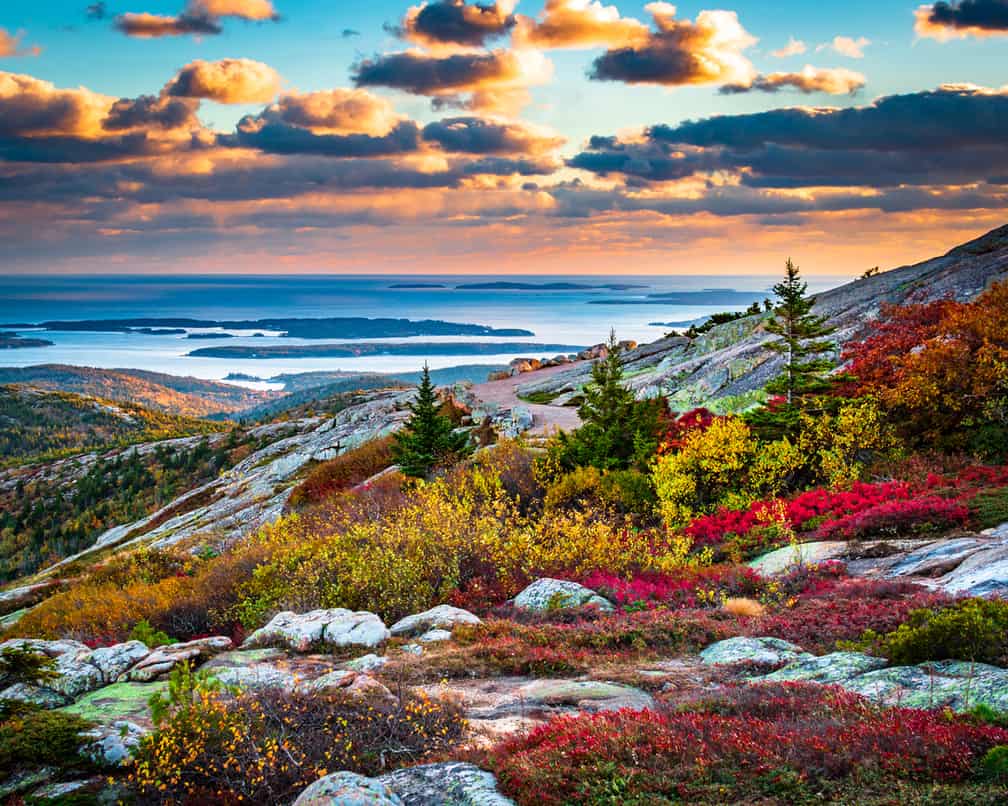Exploring the diverse landscapes of US National Parks is a rewarding experience that can be enjoyed throughout the year. Each season offers unique opportunities and challenges, making it essential to plan your visit accordingly. This comprehensive guide will help you navigate the best times to visit various parks and provide tips for making the most of your adventure, no matter when you choose to go.
Spring (March-May)
Spring breathes new life into many national parks, offering a perfect blend of mild weather and natural beauty.
Pros:
- Beautiful wildflower blooms in many parks.
- Mild temperatures ideal for hiking.
- Fewer crowds than summer.
Cons:
- Some high-elevation roads and trails may still be closed due to snow.
- Unpredictable weather, especially in mountain parks.
Best Parks to Visit:
- Yosemite (waterfalls at peak flow).
- Great Smoky Mountains (wildflowers).
- Zion (pleasant temperatures for hiking).
- Joshua Tree (before summer heat).
Tips:
- Pack layers for variable weather.
- Check park websites for road and trail status updates.
- Consider spring camping tips to enhance your experience.
Summer (June-August)
Summer is the peak season for most national parks, offering long days and full access to park facilities.
Pros:
- All park facilities and roads typically open.
- Long daylight hours for activities.
- Ideal for high-elevation parks.
Cons:
- Peak crowds and higher prices.
- Extreme heat in desert parks.
- Potential for wildfires in western parks.
Best Parks to Visit:
- Yellowstone.
- Glacier.
- Rocky Mountain.
- Mount Rainier.
Tips:
- Make reservations well in advance, especially for popular parks.
- Use park shuttles to avoid parking issues.
- Start hikes early to beat crowds and heat.
- Don’t forget your summer camping essentials.
Fall (September-November)
Fall brings cooler temperatures and stunning foliage to many national parks, making it a favorite season for many visitors.
Pros:
- Stunning fall foliage in many parks.
- Cooler temperatures.
- Fewer crowds than summer.
Cons:
- Shorter daylight hours.
- Some facilities begin to close for winter.
Best Parks to Visit:
- Acadia.
- Great Smoky Mountains.
- Grand Teton.
- Shenandoah.
Tips:
- Check fall foliage reports for optimal viewing times.
- Be prepared for cooler temperatures, especially at night.
- Book accommodations early for popular fall destinations.
Winter (December-February)
Winter transforms many parks into serene wonderlands, offering unique experiences for adventurous travelers.
Pros:
- Unique winter landscapes and activities.
- Minimal crowds in most parks.
- Great wildlife viewing opportunities in some parks.
Cons:
- Many park roads and facilities closed.
- Cold temperatures and potential for severe weather.
Best Parks to Visit:
- Bryce Canyon (snow-covered hoodoos).
- Yellowstone (wildlife viewing and geothermal features).
- Death Valley (pleasant temperatures).
- Everglades (dry season, best for wildlife).
Tips:
- Check park websites for winter road closures and conditions.
- Bring appropriate winter gear and clothing.
- Consider guided tours for safer winter exploration.
- Learn how to keep RV pipes from freezing while camping.
- Review winter camping tips for a comfortable experience.
General Tips for All Seasons
- Use the America the Beautiful Pass for cost savings on park entries.
- Visit during shoulder seasons (late spring or early fall) for a balance of good weather and fewer crowds.
- Make reservations early, especially for summer visits to popular parks.
- Check park websites or contact visitor centers for current conditions and alerts.
- Be flexible with your itinerary to accommodate weather changes or unexpected closures.
- Practice Leave No Trace principles to preserve the parks for future visitors.
- Participate in ranger-led programs to enhance your understanding of the park.
- Consider visiting lesser-known US national parks to avoid crowds during peak seasons.
Additional Considerations
- If you’re traveling with family, check out our guide to national parks with kids for family-friendly activities and tips.
- For hiking enthusiasts, explore the best hiking trails in US national parks to plan your adventures.
- If you’re interested in camping, review our list of the best national parks for camping in the USA.
- Be prepared for potential wildlife encounters in US national parks by familiarizing yourself with safety guidelines.
- For those with mobility concerns, explore our guide to accessible US national parks to ensure a comfortable visit.
By following this seasonal guide to US national parks and tips, you can maximize your enjoyment while being prepared for the unique challenges each season brings. Whether you’re visiting the top 10 must-visit US national parks or exploring off-the-beaten-path destinations, remember to always prioritize safety and respect for the natural environment during your visits. Happy exploring!

Leave a Reply